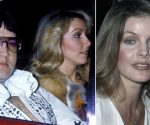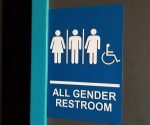Michael B. Jordan Pledges to Incorporate an Inclusion Rider on Projects, Netflix Not so Much
Michael B. Jordan announced yesterday that he’ll be adopting an inclusion rider into the projects produced by his company, Outlier Society Productions.
“Inclusion Rider” is a term that was launched into our collective vocabulary this weekend, when Frances McDormand used her Oscar acceptance speech to call on more Hollywood influencers to use them. Basically, it’s a stipulation in a contract demanding a certain level of diversity among a project’s cast and crew.
Of course, there’s been a backlash this week with some declaring that the idea is “racist” and that everyone should just hire “the best person for the job,” regardless of race or gender. But that argument presupposes that the white men who have dominated Hollywood since its infancy are inherently the best at their jobs, and not benefitting from access pathways that simply aren’t equally available to other communities.
We’re excited to see a big name like Jordan promise to use inclusion riders, but it is disappointing that the work of increasing diversity has to be spearheaded by marginalized people without much help from influential white could-be allies. After McDormand’s speech, Brie Larson took to Twitter to express her dedication to inclusion riders (and we’ve seen other examples of white stars like Jessica Chastain using their power to help marginalized individuals get more money or opportunities), but in general, Hollywood has been fairly silent on the issue.
I’m committed to the Inclusion Rider. Who’s with me? https://t.co/yvQ0wR5D80
— Brie Larson (@brielarson) March 5, 2018
Even more disappointing is the response from Netflix’s president Reed Hastings when asked if the company would consider incorporating inclusion riders into deals. His answer was a straight no, saying “We’re not so big on doing everything through agreements. We’re trying to do things creatively.”
Note:The rider wasn’t created for companies. But if @Netflix wants to create inclusion behind the camera & on screen, email us…we would love to help. Netflix’s Reed Hastings: No interest in ‘inclusion riders’ for diversity https://t.co/jeNoCIuCzW via @usatoday @reignofapril
— Annenberg Inclusion Initiative (@Inclusionists) March 7, 2018
Now, as the Annenberg Inclusion Initiative mentioned, these contract clauses were intended for individuals, not for companies. And Netflix has put out a solid amount of diverse programming. But leaving everything up to creative choices while flat-out refusing to back that up with paperwork is a privilege afforded to those who tend not to be overlooked by said creative choices. What would be the harm in making a pledge to make sure the diversity they’re putting on screen is reflected behind the camera as well?
(I do imagine Netflix would have trouble applying such a clause to their original programming since much of their “originals” are really just acquired rights to the American distribution of pre-produced works. Is that what’s holding Hastings back?)
It’s also important to remember that as exciting as it is that the words “inclusion rider” are suddenly on everyone’s mind, it’s still just a concept that needs shaping from individuals involved. The percentage of diversity represented onset and in front of the camera would need to be set, and it could be 10%, 50%, 100%–anything at all. Also, by mandating a certain level of diversity, that “diversity” can come in any form (unless otherwise stipulated). For example, if the contract says 50% of the crew needs to be “diverse,” that can mean women, POC, LGBTQ+, or pretty much anyone who isn’t a white, cis man. And we all know who falls through the cracks in those scenarios: women of color, trans women, and anyone else who doesn’t fit into only one diversity box.
So even for the Brie Larsons and the Michael B. Jordans who are ahead of the curve on inclusion, there’s still work to be done. The work never stops, really.
(image: Tim P. Whitby/Tim P. Whitby/Getty Images)
Want more stories like this? Become a subscriber and support the site!
—The Mary Sue has a strict comment policy that forbids, but is not limited to, personal insults toward anyone, hate speech, and trolling.—









Comments are closed.